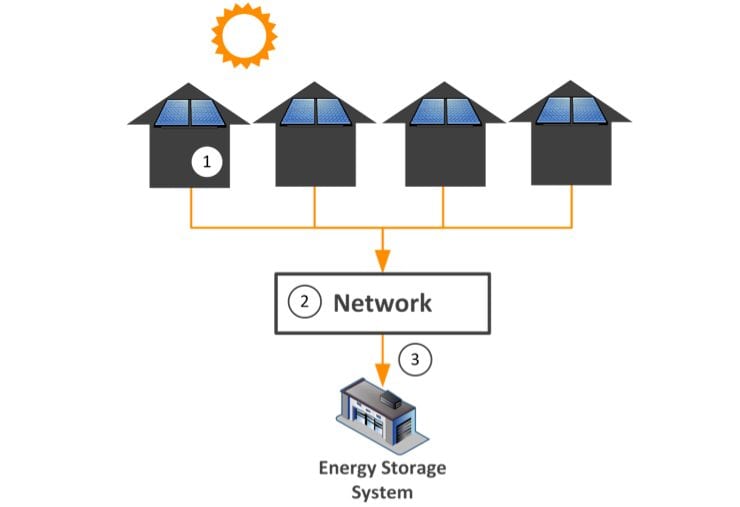What if households could deposit excess solar output in an “energy bank”, and use it to drawn down when needed or loan energy to others.
There is no doubt that rooftop solar systems are seen as a threat to incumbent utilities – be they they generators suffering from lower demand or network operators finding their business model under threat.
Most of the scenarios generated for the development of rooftop solar, such as that by the CSIRO Future Grid forum, suggest the development of in-home battery storage that could enable householders to shift their peaks, store energy for night-time or even, one day, go off grid.
But another proposal involves a different way of thinking about this – using storage, in this case compressed air, to create a sort of “solar bank” that would allow householders to deposit surplus electricity, and either draw down for their own use or lend it out to others.

The proposal comes from General Compression, a Boston-based company which is developing and trialling technology that allows excess output to be stored as compressed air in large caverns.
General Compression argues that its proposal avoids the pitfalls of rooftop solar created when too much strain in put on the network when the sun goes down, or from too much electricity being sent back to the grid.
But what if a single bulk energy storage facility could act like a bank for thousands of distributed solar system owners, suggests Peter Rood, the development manager from General Compression.
A network connected storage project would allow multiple customers to “deposit” energy into the bank during the day when they have excess generation and later “withdraw” that energy when the sun goes down.
He says that low cost of bulk storage – estimated at around one quarter of the megawatt hour cost of batteries, combined with a pay-for-use model would allow easy access to storage for customers – and allow the network to benefit from the fast responding ancillary services provided by the storage system.
Like a bank, not every customer would demand their stored energy be withdrawn at the same time and unused energy from the storage facility could be “loaned” during peak periods and later repaid during off-peak periods. This would further off-sett the cost of the facility and increasing the benefits to the network.
Rood says this would help networks because it would maintain their relationship with customers – which others have pointed out is under threat from rising network costs, falling solar and battery prices, and unchanging and inflexible business models.
And it would provide access to low cost storage to distributed solar owners and avoid individual households having excess capacity at each location. As mentioned before, general Compression sees CAES at one quarter the cost of batteries.
If such a system were introduced, it would probably require the rules of the market to be re-written, and the roles and responsibility of the storage facility operator, the network operator and the electricity retailer would need to be defined.
Note: Certain market rules and regulations may require revision to allow for the creation of the business model described in this section. In particular the roles and responsibilities of the storage facility operator, network operator, and retailer need to be defined.












